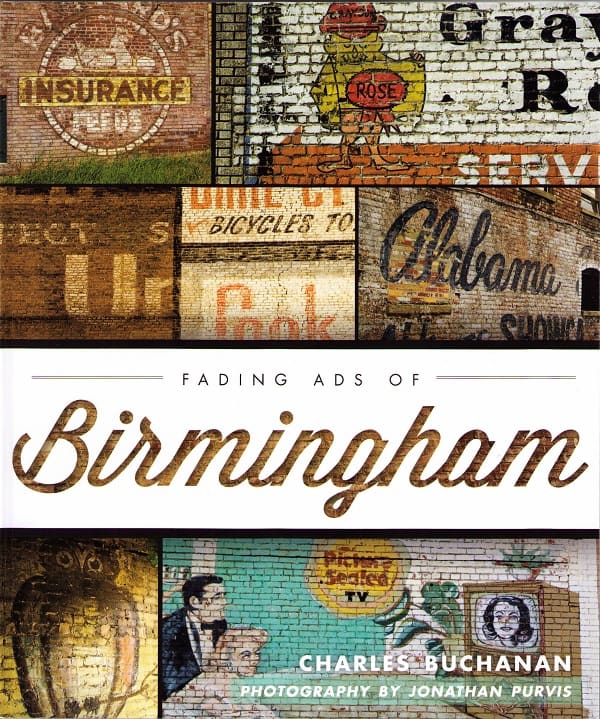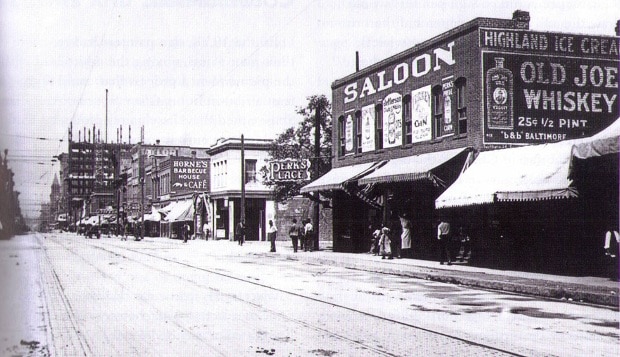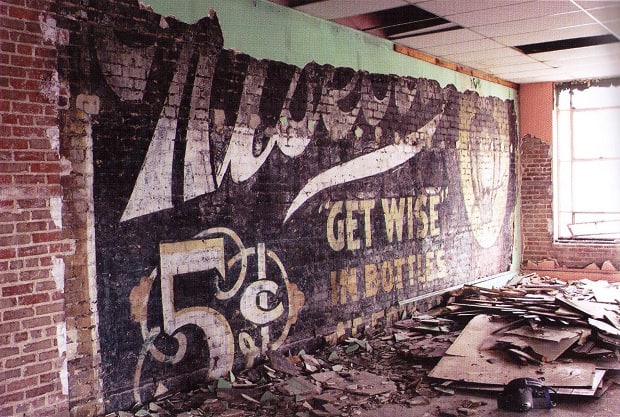11 Aug 2013
Fading Ads of Birmingham by Charles Buchanan and Jonathan Purvis

Birmingham, Alabama, is the location for this addition to the ghostsigns literature from resident advertising expert and artist Charles Buchanan. For a city founded as recently as 1871 there is a rich history found on its walls, one that Buchanan has diligently researched and which Jonathan Purvis has captured photographically.
Following a general overview of the history, production, discovery and restoration of ghostsigns, the bulk of this book focuses on the types of businesses advertised. These include food, retail, entertainment and, not surprisingly for the USA, a large section on soft, typically fizzy, drinks. The stories told through Buchanan’s research are testament to the symbolic value of the signs in both local and national history, something that is captured by a quote from Michael J. Auer in the book.
“They [ghostsigns] become landmarks, loved… for their size, or even their grotesqueness… When signs reach this stage, they accumulate rich layers of meaning. They no longer merely advertise, but are valued in and of themselves. They become icons.”
This public interaction with ghostsigns is explored in the book, from calls for their removal in the early 1970s, to the more recent efforts of individuals to have them restored. As in places around the world, ghostsigns evoke the passions of those in Birmingham, Alabama. This can arise from perceiving them as eyesores, or as objects of beauty and historic value. There are many that take this passion as the starting point for action, notably protecting and restoring the signs.

Buchanan observes that these restoration efforts go some way to showing how the signs would have looked when freshly painted and in their full-colour glory. This is in contrast to the impression given by archival monochrome images, of which there are a number featured in the book. Using these and additional research in local archives Buchanan has been able to date, with some accuracy, a number of the signs documented. This is always something of the holy grail with ghostsigns, most efforts only being able to pinpoint broad date ranges in which individual signs were produced.

Throughout the book are a remarkable number of examples of ‘Indoor Ghostsigns‘. These occur when a wall with a sign is covered by a new building constructed on an adjacent plot of land. They often remain covered until, as is the case with those in the book, those inside these newer buildings strip back their interiors to reveal the old signs. These are invariably incredibly well preserved having been protected from the weathering that their outdoor cousins endure. Perhaps the most striking of these is the pre-1909 example for Wiseola drinks (above). The owl now looks over the new bathroom of residents Jimmy and Sue Johnson, a local brand of the past delighting local residents of today through the remains of its hand-painted advertising.
Buchanan’s book is an excellent addition to the ghostsigns literature. As with the definitive Ghost Signs by William Stage, and the Fading Ads of New York City by Frank Jump, it is well researched with some excellent photos and stories to accompany them. A website accompanies the book, alongside a link to a map showing the ghostsigns featured. You can buy Fading Ads of Birmingham on Amazon and you might also like to browse the various other ghostsigns books in the shop.


